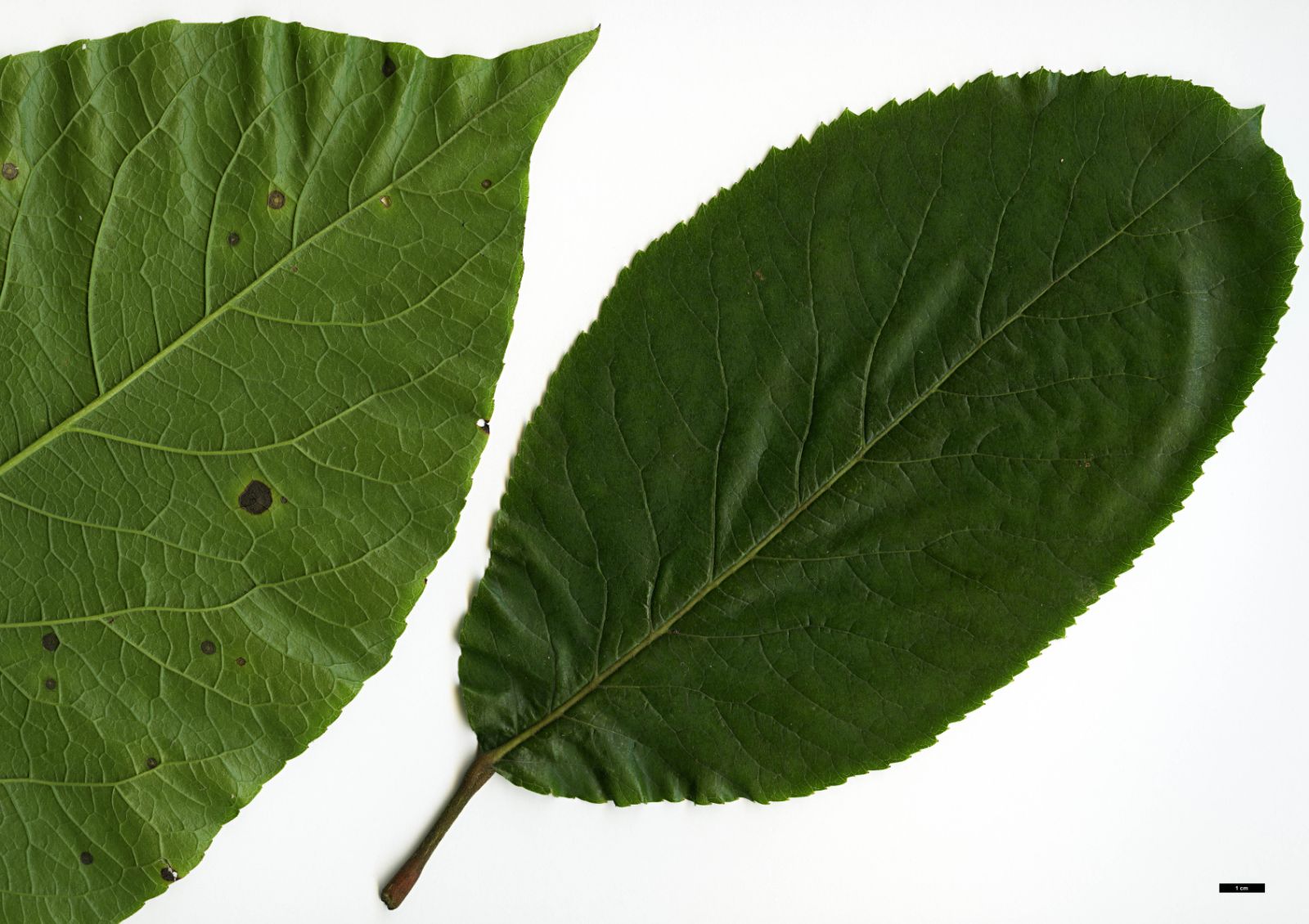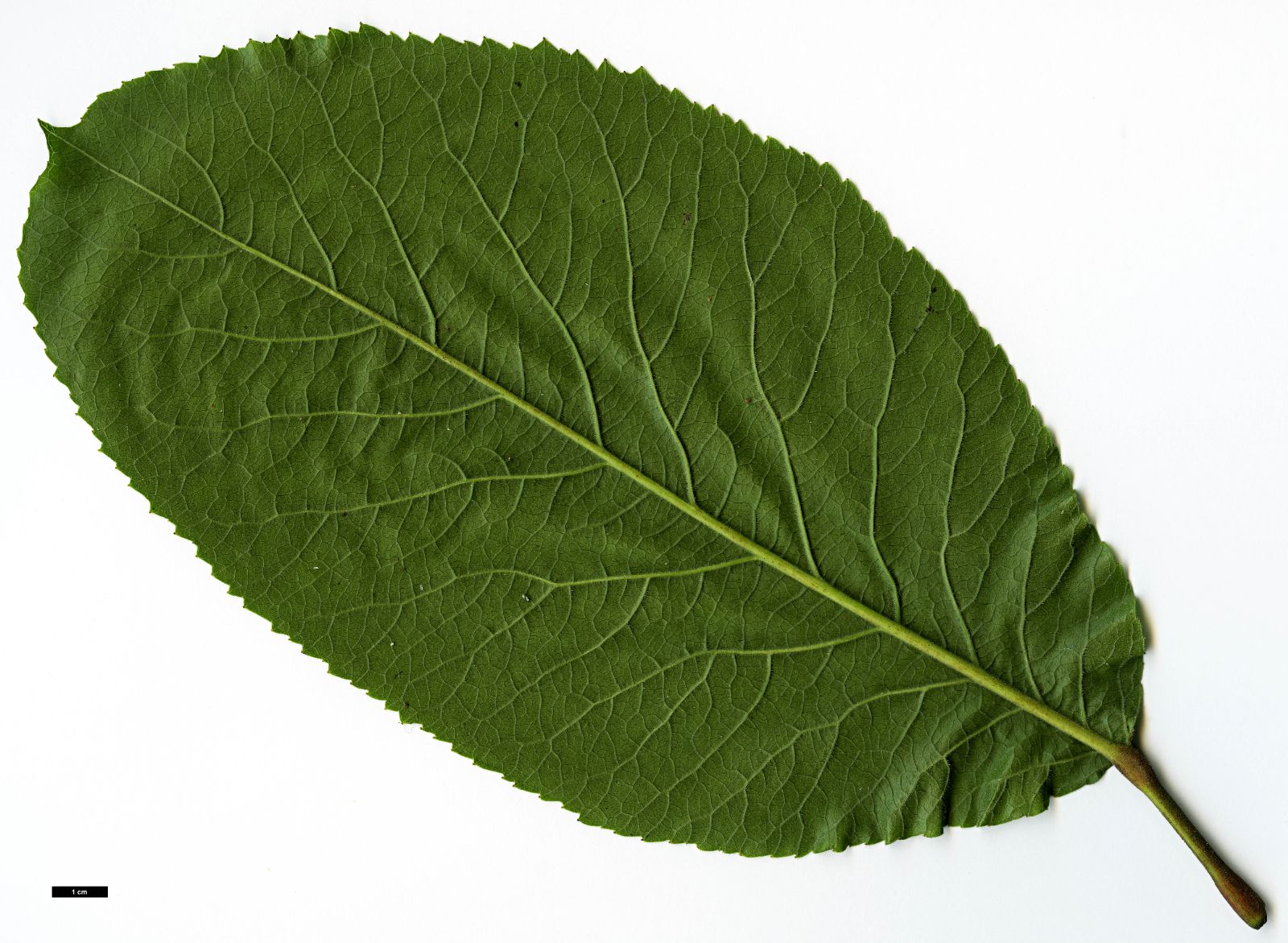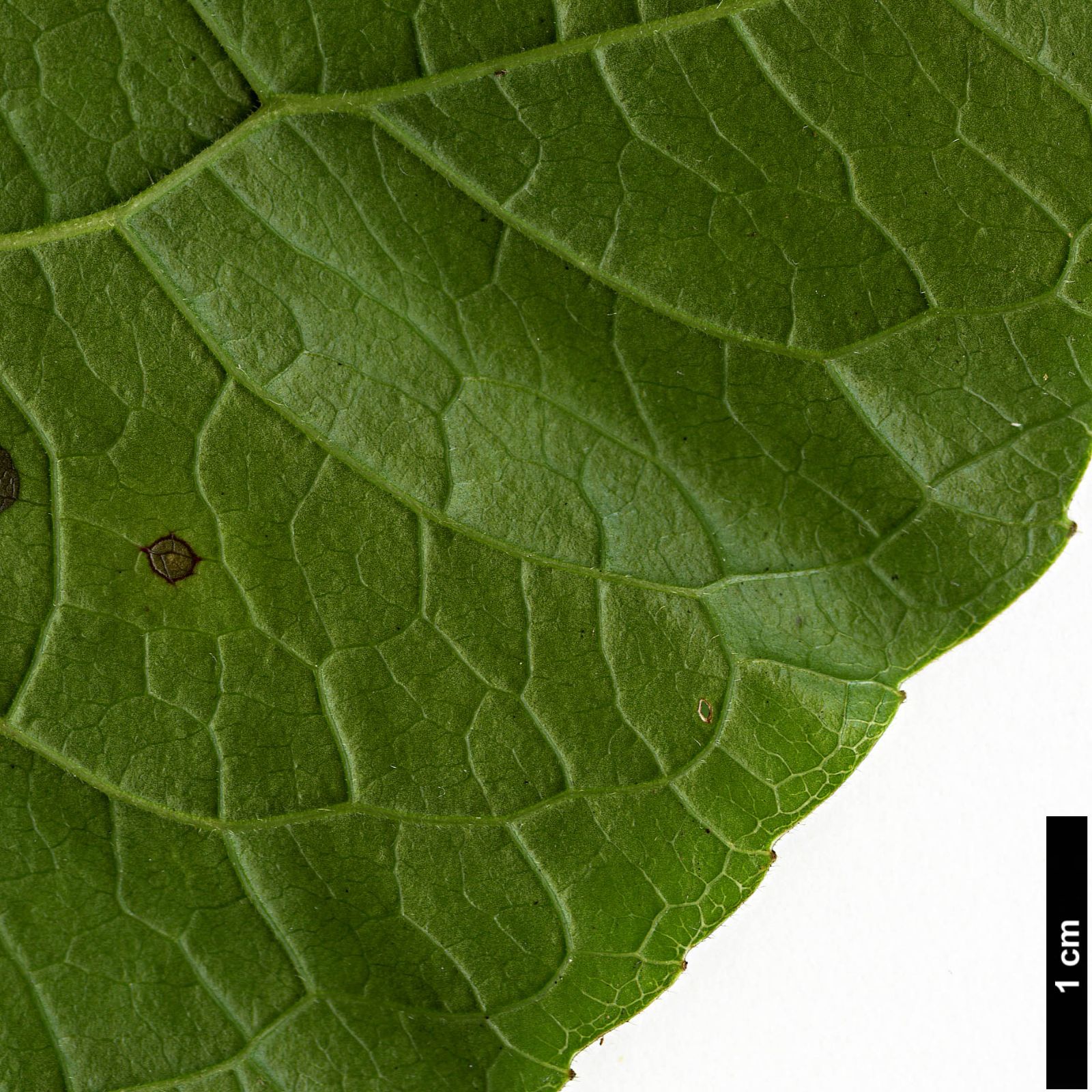Itoa orientalis
Sponsor
Kindly sponsored by
William & Griselda Kerr
Credits
Owen Johnson (2022)
Recommended citation
Johnson, O. (2022), 'Itoa orientalis' from the website Trees and Shrubs Online (treesandshrubsonline.
Genus
Common Names
Synonyms
- Carrierea vieillardii Gagnep.
- Mesaulosperma vieillardii (Gagnep.) Slooten
Other taxa in genus
Tree to 17 m; trunk often straight. Bark pale grey, smooth. Branchlets sometimes initially covered with yellowish hairs, later glabrous and lenticellate. Leaves evergreen, 9–42 (or longer) × 5–18 cm, elliptic to obovate or broad-lanceolate, upper surface largely glabrous, lower surface sometimes with stiff hairs, particularly on the veins, 10–26 secondary veins on each side of the midrib, margins almost entire to regularly crenate or serrate, apex acute or emarginate; petiole 1.5–6 cm long, sometimes pubescent. Staminate inflorescences paniculate, ~5 cm long with ~12 flowers, axes pubescent; staminate flowers ribbed and densely tomentose in bud. Pistillate flowers small, solitary. Capsule pale yellow, ovoid, tomentose, 8–9 × 4–6 cm with a six- to eight-lobed stigma at the tip; fruiting peduncle robust. Seed c. 3 mm wide, with wing to 2 cm. Flowering May to June, fruiting September to October (China). (Yang & Zmarzty 2007; Hodel & Henrich 2020).
Distribution Bhutan China Guangxi, Guizhou, Hainan, Sichuan, Yunnan Laos Vietnam
Habitat Forests, from 600 to 1300 m asl.
USDA Hardiness Zone 9
RHS Hardiness Rating H3
Conservation status Least concern (LC)
The relationship of Itoa orientalis to the temperate trees Carrierea calycina and Poliothyrsis sinensis can be observed in the panicles of unisexual flowers which have fleshy greenish-white sepals but no petals, and in the egg-like fruit which splits vertically to release many winged seeds, and whose woody segments can remain attached alternately at their top and bottom ends to create a highly distinctive and sculptural zig-zag structure (Hodel & Henrich 2020). But the leaves of Itoa are quite different: oval in shape, evergreen and gigantic. The unrelated New Zealand Puka, Meryta sinclairii, is perhaps the only tree with comparable foliage that is likely to be seen in a few favoured European and American gardens – both species are about equally tender, and the leaves of Itoa also tend to tear in strong winds (T. Hudson, pers. comm. to John Grimshaw, 2005). Itoa lacks the elegance of its deciduous allies, and its flowers are curious rather than beautiful, with their greeny-white sepals that curve inwards to form a slitted globe, like a sleigh-bell, and containing a spaghetti-like mass of stigmas; but the foliage is spectacular enough for numbers of gardeners to have recently attempted to grow this difficult plant.
The first westerner to see the species was Augustine Henry, in Yunnan, China, by 1901 (Hodel & Henrich 2020); its distribution extends southwards into the subtropical forests of Vietnam and Laos, and as far west as eastern Bhutan, where it was first found growing as a wild tree by David Long during an IDS tour in 2014 (Long 2014), and where its local name is Golonang Shing. Flora of China (2022) distinguishes var. glabrescens C.Y. Wu ex G.S. Fan, first described in 1990 from southern China and with glabrous shoots, petioles and leaves, but Plants of the World Online (2022) does not differentiate the two forms.
The first successful introduction to the west seems to have been in 1978, when four trees were raised at the Los Angeles County Arboretum and Botanic Garden in Arcadia, California, from seed sent by the South China Botanical Garden, Guangzhou; this was at a time when very few ‘new trees’ were coming out of Communist China. Irrigated through the dry Californian summer, these specimens have luxuriated, reaching 17 m by 2020, and they provide the focus for an excellent monograph on the genus by Donald Hodel and James Henrich, published in the online journal PalmArbor in 2020 (Hodel & Henrich 2020). The two female trees in the Arboretum are planted next to a mostly male hermaphrodite and produce the occasional seedling; a few of these have been transplanted to local Los Angeles parks and can grow two metres in a year, not stopping in winter.
Arcadia experiences mild frosts in most winters, but its long hot summers must help this tender tree to grow strongly enough to withstand freezing. In north-west Europe, by contrast, the fortunes of Itoa have so far been mixed and no mature examples are known. The eight-metre specimen at Tregehan in Cornwall, planted in 1995 and described in New Trees (Grimshaw & Bayton 2009), was cut back badly by the abnormal cold of December 2009, and failed to recover (T. Hudson pers. comm.). A tree of similar age in the walled garden of Torre Abbey in Torquay, which was a promising five metres tall in 2004, also failed to survived this winter (Tree Register 2022). Further east again, a scion of the Tregrehan tree planted at the Ventnor Botanic Garden in 2011 (Ventnor Botanic Garden 2011) has apparently failed as well. In Ireland however – where the cold of December 2009 was particularly harsh – the 1995 planting at Earlscliffe outside Dublin has flourished (Robinson Garden at Earlscliffe 2021). Another younger Irish tree is at Hunting Brook Gardens, Co. Wicklow (Fowler 2020).
A tree in a sheltered corner of the garden of Buckingham Palace in central London was four metres tall in 2021 and was already flowering and fruiting (Tree Register 2022); like the Californian examples this benefits from summer irrigation and grows in a microclimate which – in terms of maximum and minimum temperatures – is surprisingly similar, so it may well embody the species’ best long-term hopes in Britain.
Online resources indicate an accession in the Jardín Botánico de Iturraran at Aia in the far north-east of Spain (Garin 2022), and one at the Warepuke Sculpture Park in New Zealand, which has supplied a herbarium specimen for the Auckland Museum and would seem well placed to thrive. In 2022 Itoa orientalis was commercially available from À l’Ombre des Figuiers in Brittany and from Far Reaches Farm in Washington State – where there is an assumption that most sales will be for conservatory use – and also in south-eastern Australia from Dicksonia Rare Plants.







